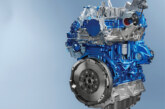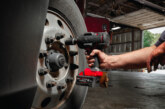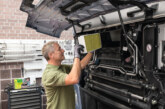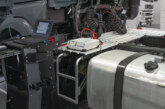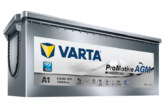
Original equipment wiper blade manufacturer Trico explains that now is the time to check the condition of wiper blades and, if necessary, replace them.
As the weather has gone from heatwaves to rain and frost, it’s more important than ever for commercial vehicle (CV) workshops and fleet operators to appraise and potentially replace the wiper blades, as they’re one of the most safety critical components on a heavy-duty vehicle.
Trico has compiled a helpful checklist that technicians can use to assess the blade’s condition and identify if it needs replacing.
Clean screen
Ensure the windscreen is thoroughly cleaned using warm water or specialist glass cleaning fluid. In particular, pay attention to the areas at the top and bottom of the wipe area, as dirt and debris collect there. Also check the glass for any cracks or chips, as these are a safety hazard in their own right, but can also damage the wiper blade rubber.
Safe and secure fitment
Check the blade is securely fixed to the arm. The blade should rotate freely, parallel with the wiper arm, to allow it to flex over the screen, but there should be no wobbling or movement perpendicular to the arm. This movement can be a sign of wear from the blades flipping over and could eventually cause the blades to come apart during use. Naturally, if the blade shows excessive movement, replace it immediately.

Blade edge check
Gently clean the rubber blade edge with a damp cloth or sponge to remove any dirt or residue. Check along its length for any imperfections in the rubber, in particular check at either end that it has not split. Ensure that the rubber element returns to a central position and is not flipped over and set in one direction. If the blade fails any of these checks, it should be replaced.
As blades are not only affected by rain and snow, but also the UV rays from the sun, Trico recommends that wiper blades are replaced every twelve months to ensure maximum effectiveness and visibility, so CV operators should keep to a maintenance schedule for wiper blades.
Wipe check
Using the washer spray or a mister bottle to spray the glass, operate the wipers and check that there are no missed areas, water smears or multiple streaks that impair vision. Any light misting remaining after the wipe should disappear quickly. Naturally, blades that leave streaks or smears should be replaced immediately.
First Brand’s Group Brand & Marketing Manager (Europe), Sam Robinson, said: “We’re now well into the ‘wiper blade’ season and the weather is certainly a lot wetter, so it’s essential for fleet managers to ensure their drivers are operating in a safe vehicle.
“There are many signs to look out for, but the main ones are smearing, streaking and if the blades are ‘chattering’ or jumping across the windscreen, all of which are indicators that the blade needs to be changed ASAP. We’d also advise you to change both blades at the same time to ensure optimum wiping ability and complete visibility for your drivers.”




